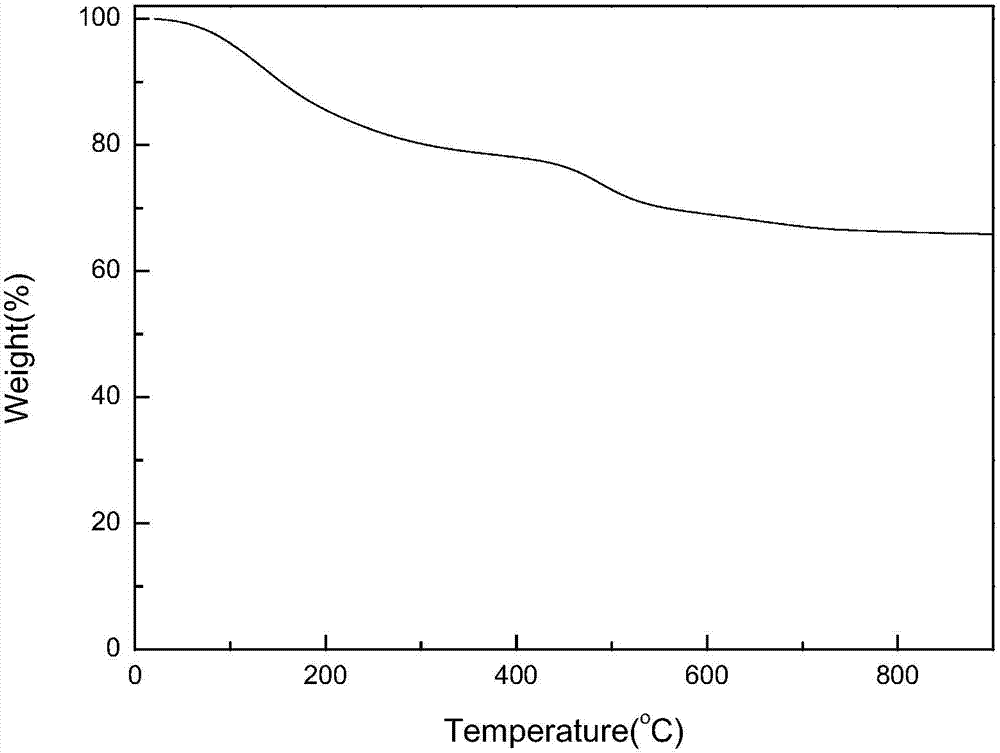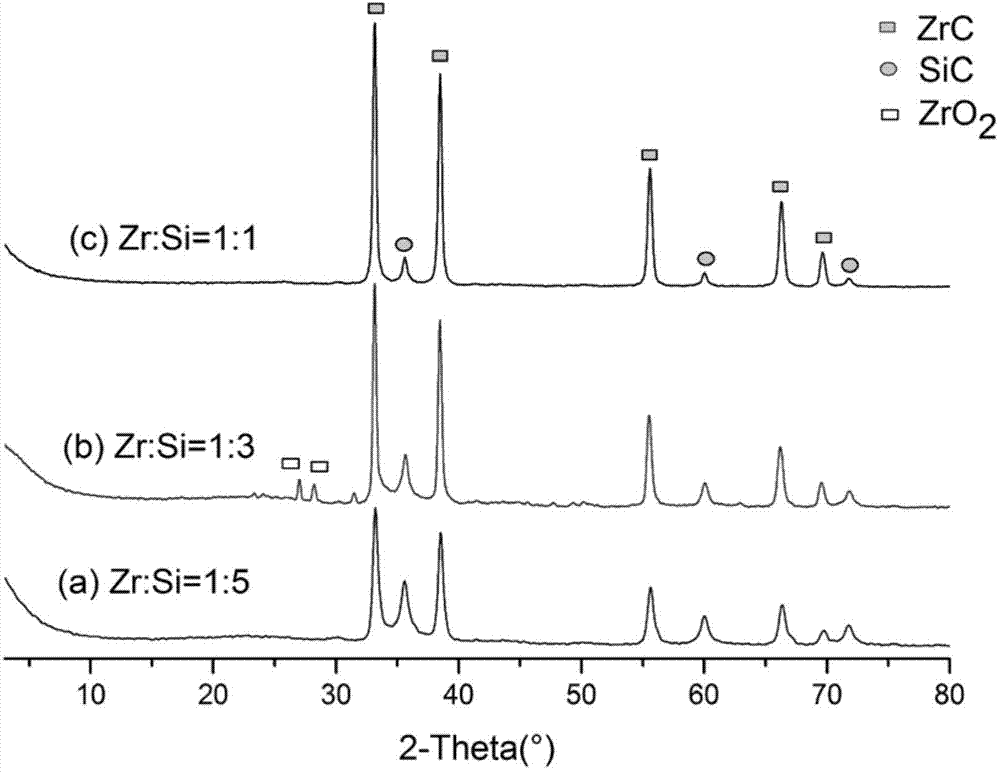Si/C/Zr ceramic precursor and preparation method thereof
A technology of ceramic precursors and monomers, applied in the field of ceramic materials, can solve problems such as lack of processability, and achieve the effects of high synthesis yield and product purity, small curing heat release, and simple and easy synthesis process.
- Summary
- Abstract
- Description
- Claims
- Application Information
AI Technical Summary
Problems solved by technology
Method used
Image
Examples
Embodiment 1
[0040] 500ml dry three-neck bottle, equipped with N 2 Import piston, condensation tube, nitrogen outlet piston, constant pressure dropping funnel and electromagnetic force stirring, vacuumize, and replace the air in the system with nitrogen gas, and bake with alcohol lamp to remove adsorbed water. Add 4.0g of magnesium chips into the reaction flask, add 50ml of tetrahydrofuran into the reaction flask with a syringe; add 100ml of tetrahydrofuran, 1.0g (0.013mol) of allyl chloride, 10.6g (0.06mol) of methanol into the constant pressure dropping funnel Chlorosilane, 17.5g (0.06mol) zirconocene dichloride to form a mixed solution. At 60°C, slowly add the mixed solution dropwise into the mixed system of magnesium chips and tetrahydrofuran under stirring, and continue stirring for 10 h after the dropwise addition is completed. Add 1.25 g of granular lithium aluminum hydride and stir at room temperature for 5-20 hours.
[0041] Add 100ml of petroleum ether, 350ml of deionized water...
Embodiment 2
[0048] 500ml dry three-neck bottle, equipped with N 2 Import piston, condensation tube, nitrogen outlet piston, constant pressure dropping funnel and electromagnetic force stirring, vacuumize, and replace the air in the system with nitrogen gas, and bake with alcohol lamp to remove adsorbed water. Add 4.0g of magnesium chips to the reaction flask, add 50ml of tetrahydrofuran to the reaction flask with a syringe; add 100ml of tetrahydrofuran, 1.0g (0.013mol) of allyl chloride, 15.8g (0.09mol) of methanol to the constant pressure dropping funnel Chlorosilane, 8.8g (0.03mol) zirconocene dichloride and 2.2g (0.013mol) chloromethylmethyldichlorosilane form a mixed solution. At 60°C, slowly add the mixed solution dropwise into the mixed system of magnesium chips and tetrahydrofuran under stirring, and continue stirring for 10 h after the dropwise addition is completed. Add 1.9 g of granular lithium aluminum hydride and stir at room temperature for 5-20 hours.
[0049] Add 100ml of...
Embodiment 3
[0055] 500ml dry three-neck bottle, equipped with N 2 Import piston, condensation tube, nitrogen outlet piston, constant pressure dropping funnel and electromagnetic force stirring, vacuumize, and replace the air in the system with nitrogen gas, and bake with alcohol lamp to remove adsorbed water. Add 4.0g of magnesium chips to the reaction bottle, add 50ml of tetrahydrofuran to the reaction bottle with a syringe; add 100ml of tetrahydrofuran, 2.0g (0.026mol) of allyl chloride, 21.1g (0.12mol) of methanol to the constant pressure dropping funnel Chlorosilane, 8.8g (0.03mol) zirconocene dichloride and 4.3g (0.026mol) chloromethylmethyldichlorosilane form a mixed solution. At 60°C, slowly add the mixed solution dropwise into the mixed system of magnesium chips and tetrahydrofuran under stirring, and continue stirring for 10 h after the dropwise addition is completed. Add 2.5 g of granular lithium aluminum hydride and stir at room temperature for 5-20 hours.
[0056] Add 100ml ...
PUM
 Login to View More
Login to View More Abstract
Description
Claims
Application Information
 Login to View More
Login to View More - R&D
- Intellectual Property
- Life Sciences
- Materials
- Tech Scout
- Unparalleled Data Quality
- Higher Quality Content
- 60% Fewer Hallucinations
Browse by: Latest US Patents, China's latest patents, Technical Efficacy Thesaurus, Application Domain, Technology Topic, Popular Technical Reports.
© 2025 PatSnap. All rights reserved.Legal|Privacy policy|Modern Slavery Act Transparency Statement|Sitemap|About US| Contact US: help@patsnap.com



